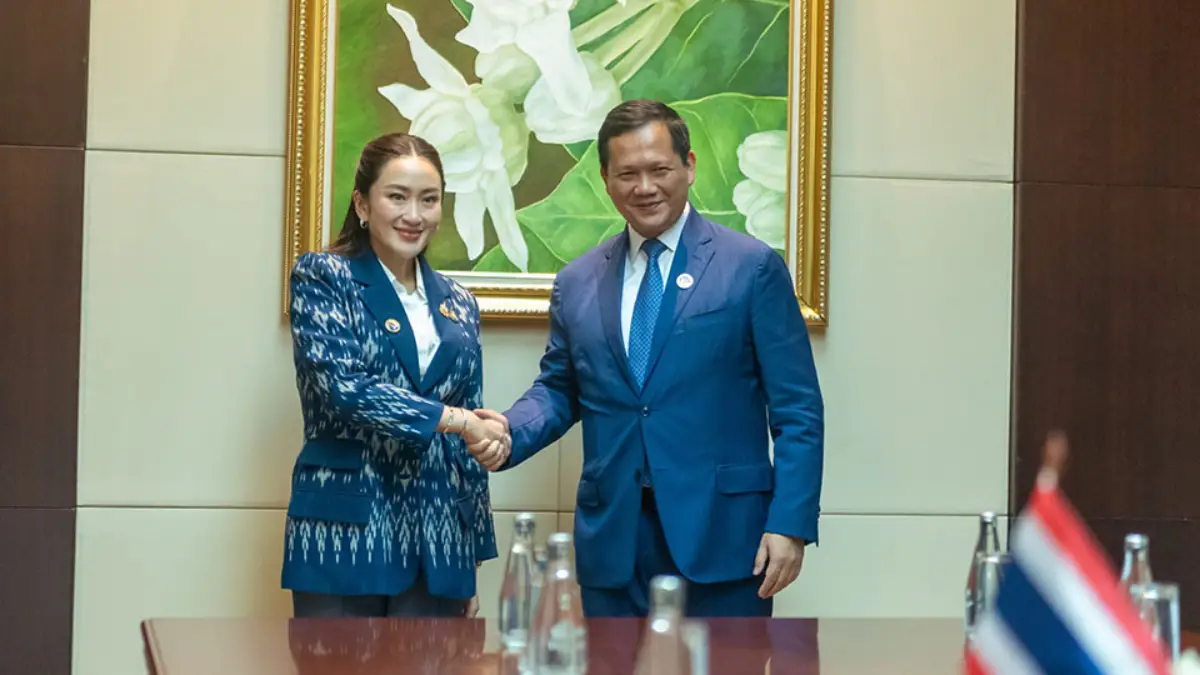Cambodia has outlined three clear conditions for reopening its border crossings with Thailand, as tensions over month-long closures—initiated by Thai authorities—continue to disrupt trade and affect the livelihoods of citizens in both countries. The closures, which began in early June 2025, have sparked frustration among communities, particularly in Thailand’s Sa Kaeo province, where locals are urging their government to resolve the issue.
Origins of the Border Shutdown
The closures were first implemented by the Thai military on June 7, 2025, with varying operating hours at different crossing points. The situation escalated on June 23 when Thailand’s now-suspended Prime Minister Paetongtarn Shinawatra ordered a full shutdown of most border checkpoints, allowing only students and medical patients to cross. Thai authorities have cited efforts to combat scam operations as the rationale behind the closures. In response, Cambodia reciprocated by closing some of its own crossings, further straining cross-border movement.
The Ban Khlong Luek International Border Checkpoint in Aranyaprathet district of Thailand’s Sa Kaeo province, one of the key crossings, has remained shuttered for weeks, with police personnel patrolling the area to enforce the closure. The impact of these shutdowns extends beyond mere inconvenience, hitting local economies hard as border trade—a lifeline for many communities—has ground to a halt.
Cambodia’s Conditions for Reopening
On July 14, 2025, Cambodian Prime Minister Hun Manet addressed the issue during a speech at the 32nd anniversary of the Royal Gendarmerie, laying out three non-negotiable conditions for reopening the borders. He emphasized that Cambodia is ready to cooperate without the need for formal negotiations, placing the responsibility squarely on Thailand to act.
“For reopening the borders, we ask for only three conditions, and the key has already been handed to Thailand. They can reopen without sitting down for negotiations with us; we are offering concessions. First, Thailand must unilaterally announce the reopening, confirm that it will not use unilateral closure measures again, and restore the situation to how it was before June 7” Hun Manet stated.
The second condition demands that all border crossings be reopened simultaneously, rejecting any partial measures. “They may want to negotiate to open some and keep others closed for security reasons. No, this is about the people and trade, not the military” he added, underscoring the humanitarian and economic stakes involved.
Finally, Cambodia insists on a return to pre-June 7 operating hours—6 a.m. to 10 p.m.—for both goods and people. Hun Manet clarified that Cambodia had not initiated any closures and had even adapted to Thailand’s adjusted hours before the full shutdown. “Cambodia wants a clear, sustainable solution and to stop using this as a game or a condition tied to people’s livelihoods to resolve border issues. That’s all we want” he said.
Economic and Social Fallout
The border closures have had a profound impact on bilateral trade, a critical component of the economies of both nations, particularly in border regions. Sa Kaeo province, a hub for cross-border commerce with Cambodia, has seen local businesses suffer as goods and services are unable to flow freely. Thai citizens in the area have grown increasingly vocal, pressing their government to find a resolution. The closures have disrupted supply chains, limited access to markets, and strained the livelihoods of countless families who depend on daily cross-border interactions.
In Cambodia, the economic toll is equally severe. Border trade stalls have become a common sight, with merchants unable to transport goods or reach customers on the Thai side. The closures have also restricted the movement of workers and families, adding to the social strain in communities that straddle the border.
Beyond economics, the closures have reignited discussions about the fragility of Cambodia-Thailand relations, which have historically been marked by periods of tension over border disputes and political differences. While both sides have maintained diplomatic channels, the unilateral nature of Thailand’s decision has raised questions about trust and cooperation between the two neighboring kingdoms.
Thailand’s Position and Challenges
Thailand’s justification for the closures—combating scam operations—points to a broader regional concern about cross-border crime. Southeast Asia has seen a rise in scam syndicates, often operating from border areas, exploiting lax regulations and porous frontiers. However, the blanket closure of checkpoints has drawn criticism for its indiscriminate impact on legitimate trade and travel, with many questioning whether such drastic measures are proportionate to the problem at hand.
The political context in Thailand adds another layer of complexity. With Prime Minister Paetongtarn Shinawatra currently suspended, decision-making on the border issue may face delays or shifts in policy. Local authorities in Sa Kaeo province, caught between national directives and community pressure, have limited power to act independently, leaving the resolution in the hands of higher-level officials in Bangkok.
For now, Thailand has not publicly responded to Cambodia’s conditions, and it remains unclear whether it will agree to the terms outlined by Hun Manet. The insistence on a unilateral announcement and a guarantee against future closures may prove contentious, as it requires Thailand to cede control over a policy it views as tied to national security.
Regional Implications
The standoff over border crossings is more than a bilateral issue; it carries implications for the broader Association of Southeast Asian Nations (ASEAN) framework, which prioritizes regional connectivity and economic integration. Cambodia and Thailand, both ASEAN members, are expected to uphold principles of cooperation, making the current impasse a test of the bloc’s ability to mediate or influence outcomes in intra-regional disputes.
Economically, the closures disrupt a key corridor for goods and people in mainland Southeast Asia, with ripple effects felt beyond the two countries. Neighboring nations like Laos and Vietnam, which rely on overland trade routes through Thailand and Cambodia, may also experience delays or increased costs as a result of the shutdowns. The situation highlights the interconnected nature of the region’s economies and the need for coordinated policies to address cross-border challenges without resorting to unilateral actions.
Moreover, the border closures come at a time when Southeast Asia is striving to recover from the lingering effects of global economic slowdowns and post-pandemic challenges. Trade and tourism, critical drivers of growth for both Cambodia and Thailand, are particularly vulnerable to disruptions like these, potentially undermining efforts to attract investment and boost regional stability.
Voices from the Ground
In Sa Kaeo province, the human cost of the closures is palpable. Small-scale traders, who once crossed the border daily to sell goods or procure supplies, now face empty stalls and dwindling incomes. Families separated by the border struggle to maintain contact, with exceptions for students and medical patients offering little relief to the majority. The frustration among Thai citizens mirrors sentiments on the Cambodian side, where communities feel caught in a geopolitical game beyond their control.
The border regions of Cambodia and Thailand have long been zones of cultural and economic exchange, with shared histories and intertwined livelihoods. The current closures threaten to erode these ties, fostering resentment and mistrust among people who have coexisted for generations. For many, the solution lies not in military or political posturing but in dialogue and mutual understanding—qualities that appear in short supply at the moment.
Looking Ahead
As the border standoff enters its second month, the path to resolution remains uncertain. Cambodia’s conditions offer a clear framework for reopening, but their acceptance hinges on Thailand’s willingness to prioritize economic and humanitarian concerns over security rhetoric. With both sides standing firm, the risk of prolonged closures looms large, potentially deepening the economic scars on border communities.
The situation also raises broader questions about how Southeast Asian nations balance national interests with regional solidarity. As ASEAN continues to advocate for seamless connectivity, the Cambodia-Thailand border issue serves as a reminder of the challenges inherent in translating such ideals into practice. For now, the people of Sa Kaeo and beyond can only hope for a swift resolution—one that restores not just the flow of goods, but the spirit of neighborly cooperation.















